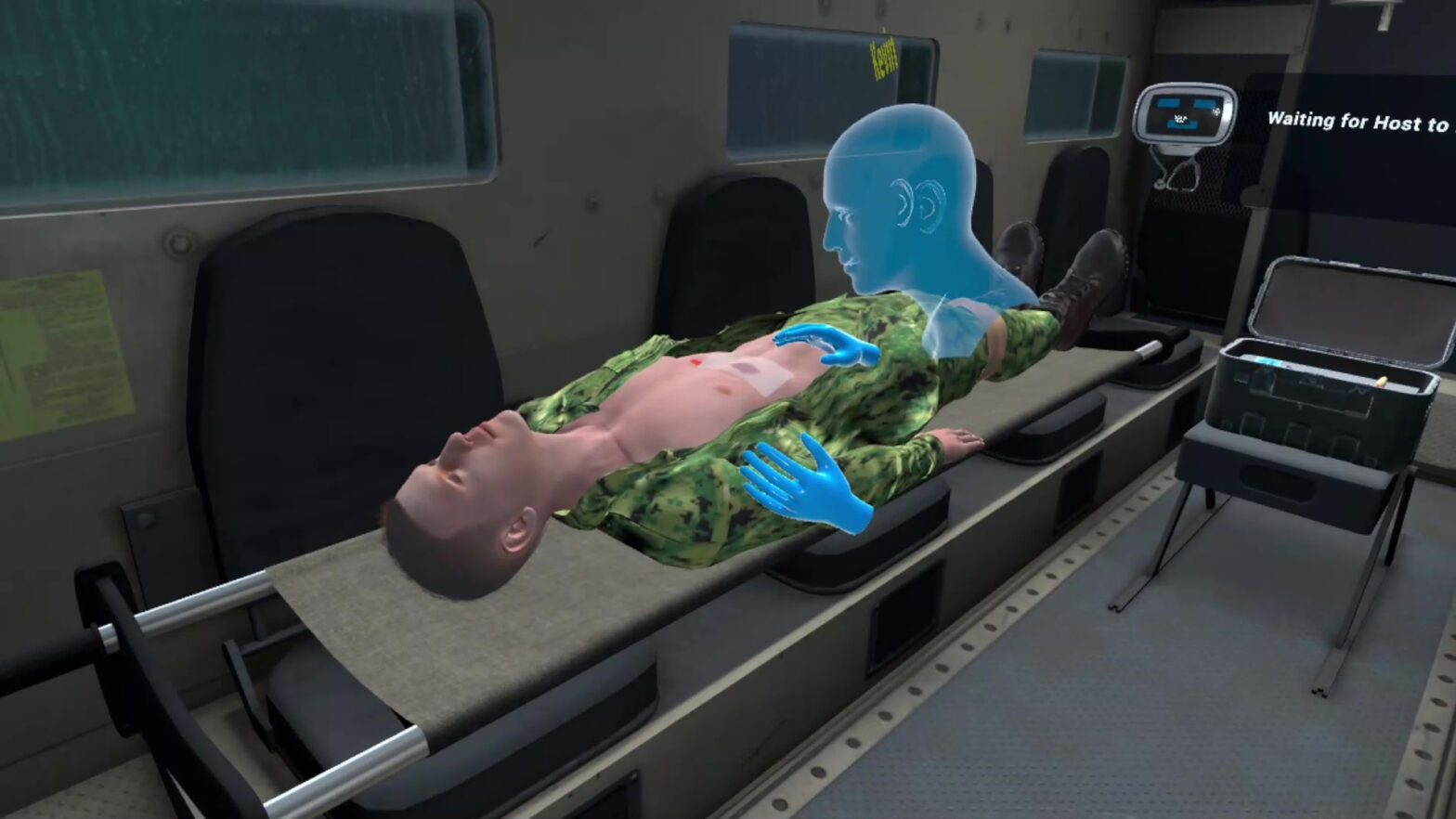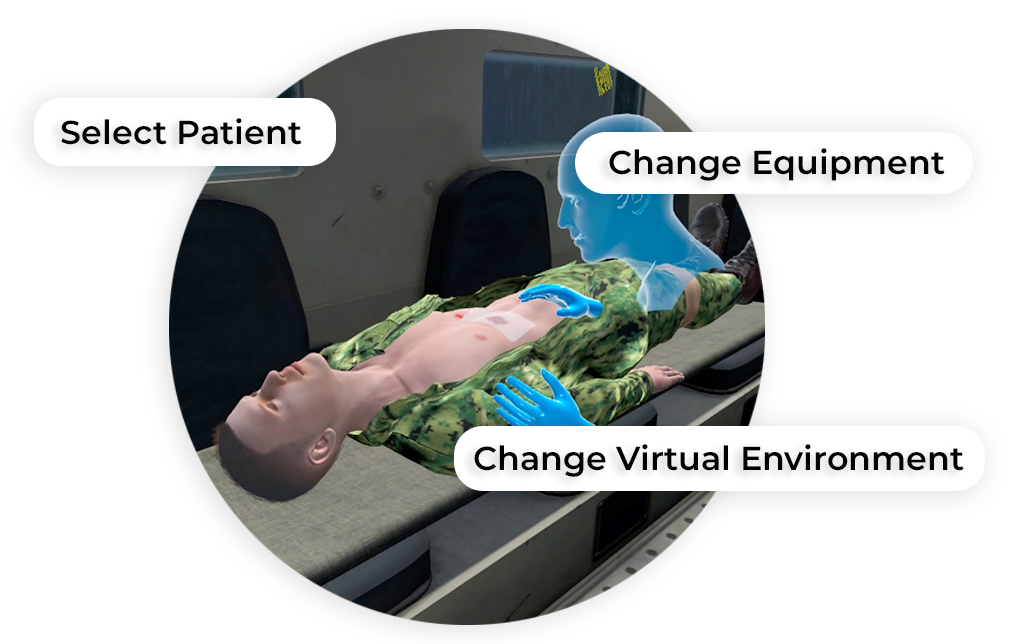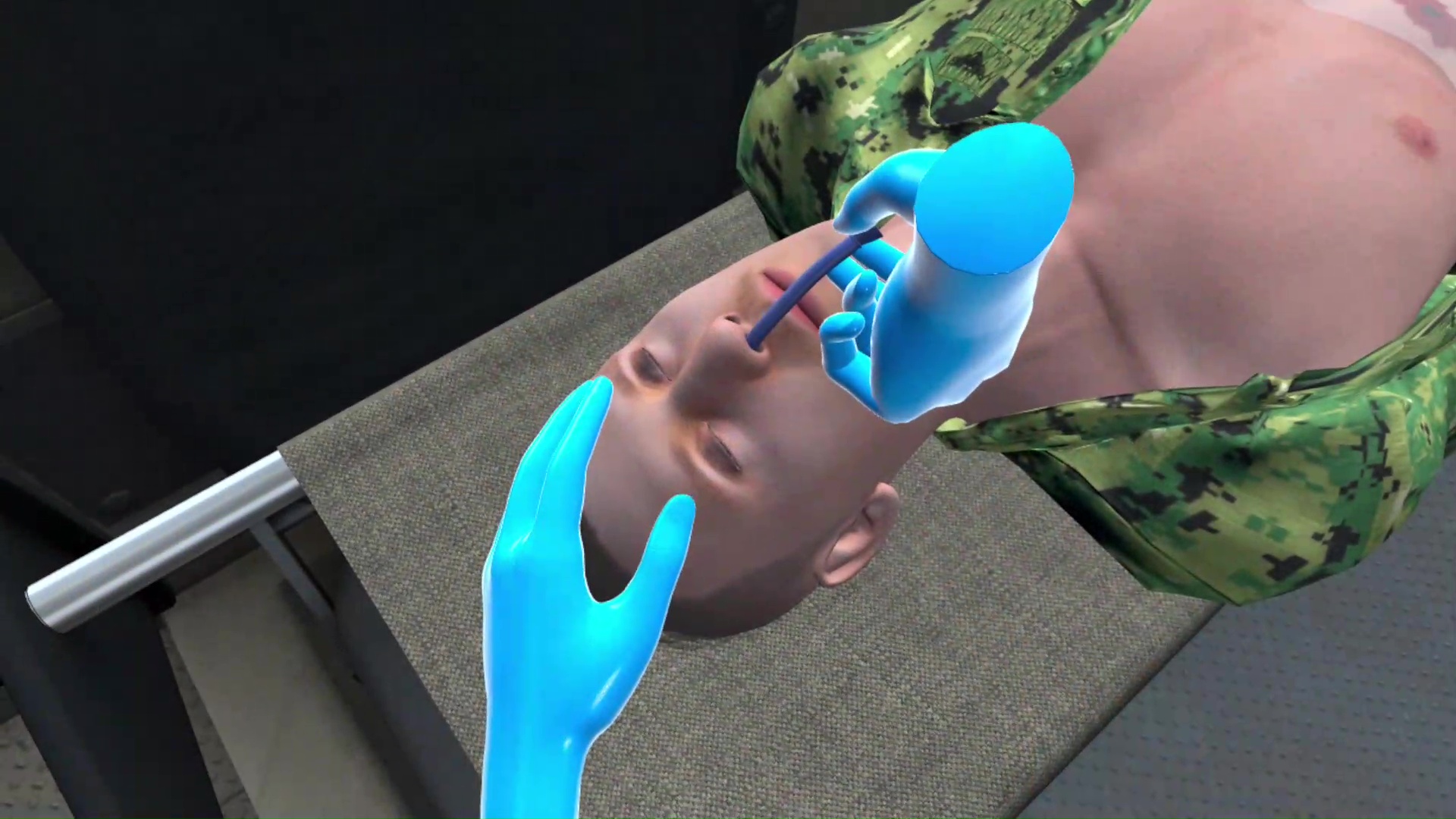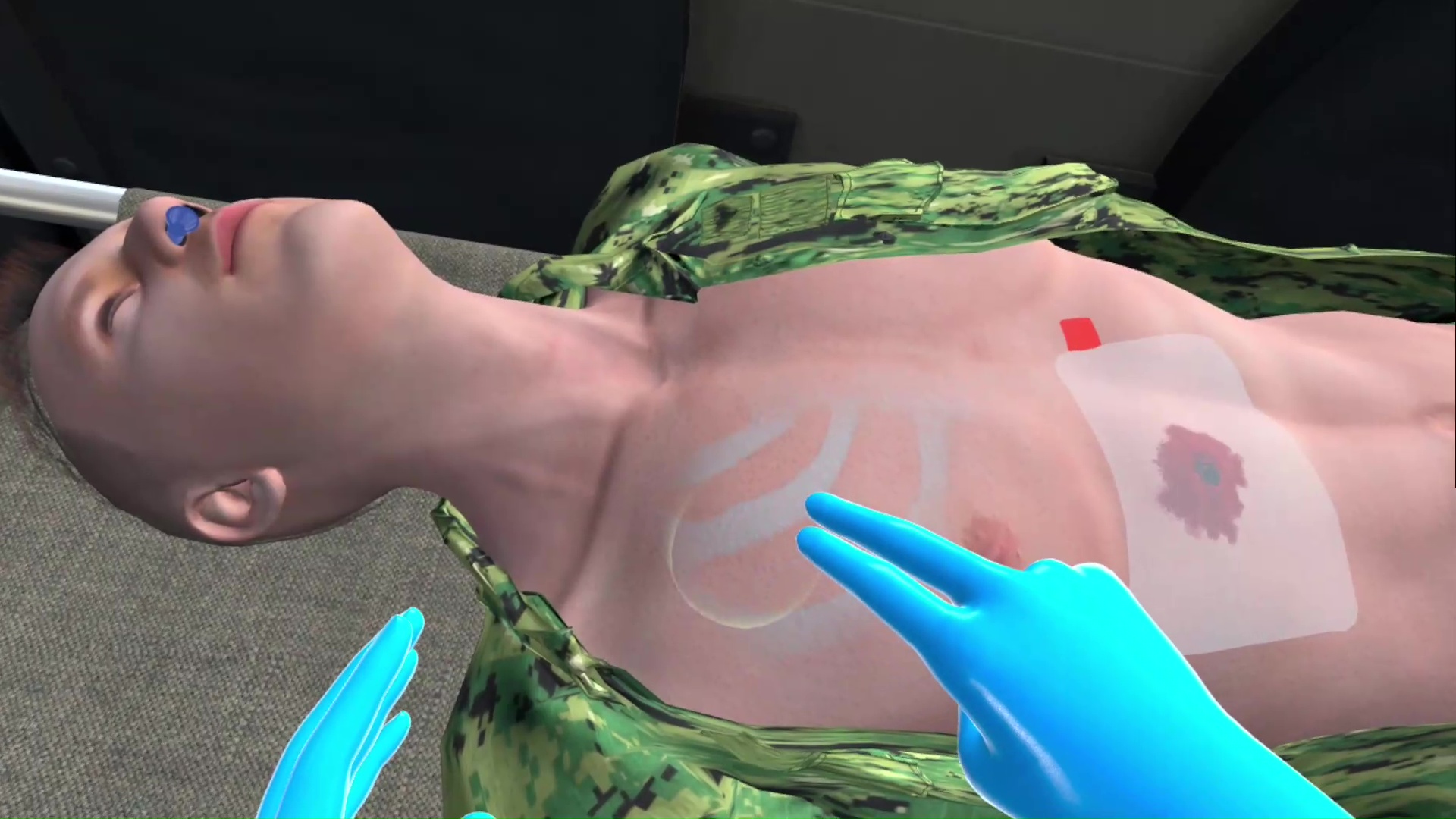Airway Management – TCCC
Due to an injury in combat, a soldier is suffering from an obstructed airway. Immediate measures must be taken to restore airway patency. As part of the team, take necessary steps towards airway management.
This multiplayer open scenario VR session is set in realistic interactive environments. It is designed to provide learners practice in performing airway management measures in combat situations.
- Identify airway obstruction in patient
- Position tube accurately to initiate airway management
- Display knowledge of correct placement on tube in nostril
- Identify bilateral chest movement and trachea deviation
- Locate second intercostal space in the midclavicular line to relieve pressure

- U.S. Department of Defense. (2024). Tactical Combat Casualty Care Handbook, Version 5. Retrieved from https://api.army.mil/e2/c/downloads/ 2023/01/19/31e03488/17-13-tactical-casualty-combat-care-handbook-v5-may-17-distro-a.pdf
Customize Your Program
Get rid of the editor. Adopt in-VR customization.
MedVR Education is bringing to you in-VR customization that will enable you to put together your own simulations by making selections from a wide range of feature choices.
- Select patient from a diverse background
- Choose preferred virtual environment
- Configure patient vitals
- Define simulation duration
- Create patient history and train with AI-Humans
- Customize session-end debriefing
- …..many more to come

 Multi-playerSessions
Multi-playerSessions Physics-based Interactions
Physics-based Interactions
Core Skills Training

Airway Management - TCCC
As part of this multiplayer open scenario, the learner will begin by opening the lubricant pouch and applying it to the tube. The learner will position the tube to have the bevel of the airway face the septum. Identifying a bilateral chest movement and trachea deviation, the learner will use the decompression needle kit to relieve pressure buildup and provide relief to the patient. This scenario is set in a photorealistic environment and all necessary affordances are made available to assist learners in performing their tasks with efficiency and effectiveness.
Debriefing
End-of-task debriefing to assess one’s performance, evaluate actions, and get the most out of the training. Examples of topics being touched upon in the debriefing include the following:
- Thorough patient assessment
- Completion of necessary steps
- Correct medication administration to patient
- Sequential completion of task
- Execution of time-sensitive tasks






